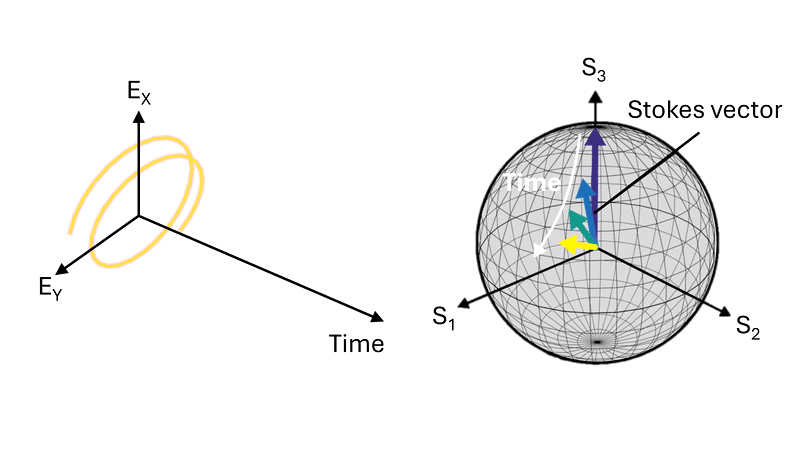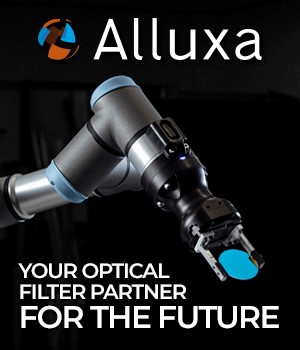02.07.25
Author: Nik Papageorgiou
Source: EPFL
EPFL scientists have developed a new technique that lets researchers watch, with unprecedented sensitivity, how materials emit polarized light over time.
Light isn’t just bright or dim, colored or plain. Its waves can also twist and turn, in a phenomenon called polarization. Think about the glasses you wear at a 3D movie, which use light polarization to make each eye see a slightly different image, creating the illusion of depth.
Polarization is key for future technologies, from quantum computers to secure communication and holographic displays. Many materials emit light in ways that encode information in its polarization, as if we were using the direction of light waves to send a message. Among these phenomena is a form known as circularly polarized luminescence (CPL), a special type of light emission produced by chiral materials where light waves spiral either left or right as they travel.
Overcoming the limitations of traditional techniques
To unlock new applications, researchers need to observe exactly how this polarization evolves over time. But so far, scientists have had to compromise because existing methods force a trade-off between speed, sensitivity, or a broad range of colors.
Standard CPL techniques are often slow, narrowly focused, or unable to pick up faint signals, especially when studying advanced materials with fleeting or subtle polarization effects. These limitations have slowed the quest to fully understand how chiral (handed) materials interact with light.
Now, a team led by Professor Sascha Feldmann at EPFL’s Laboratory for Energy Materials has developed a high-sensitivity, broadband, time-resolved spectroscopy technique that captures the complete set of polarization states (the so-called "Stokes vector").

A depiction of the Stokes vector. Credit: S. Feldmann (EPFL)
The new technique does this across a wide spectral window (400–900 nanometers), and at time intervals ranging from just nanoseconds up to several milliseconds, all with a noise floor as low as one ten-thousandth the intensity of the polarized light being emitted by a material. The new technique also captures linear and circular polarization signals at the same time, which helps identify and correct for polarization artifacts that often trip up other methods.
A cutting-edge instrument
The team designed the instrument with straightforward, off-the-shelf components, making it widely adoptable, and they’re sharing the full optical schematics and a compendium of “non-obvious” error sources to open the field up for others.
They used an electronically gated camera and a carefully designed set of polarization optics to record the full Stokes vector in real time, tracking changes in light emission from different types of molecules that feature both strong and weak polarized luminescence. By recording the complete polarization fingerprint, the new setup can uncover details that other approaches miss.
The new approach successfully captured polarization changes in materials that had never been tracked in such detail before. It reproduced benchmark results for well-studied molecules, and it revealed previously unseen dynamics in organic emitters and complex systems where light emission happens on both fast and slow timescales.
The technique also exposed subtle polarization artifacts—false signals that traditional measurements often confuse with real effects—allowing researchers to avoid common pitfalls.
With its combination of high sensitivity, wide spectral coverage, and nanosecond time resolution, the technique opens an unprecedented window onto the realm of excited-state polarization dynamics and symmetry-breaking. Scientists can now observe these processes in real time, accelerating the design and development of chiral emitters, quantum materials, and advanced optoelectronic devices.
The team has also made their blueprints and automation algorithms public in an effort to democratize the field and help speed up discoveries worldwide.
Funding
Rowland Institute (Harvard)
Studienstiftung des deutschen Volkes
EPFL
Université Paris-Saclay doctoral school 2MIB
French Ministry of Higher Education, Research and Innovation
References
Antti-Pekka M. Reponen, Marcel Mattes, Zachary A. VanOrman, Lilian Estaque, Grégory Pieters, Sascha Feldmann. Broadband transient full-Stokes luminescence spectroscopy. Nature 25 June 2025. DOI: 10.1038/s41586-025-09197-3





